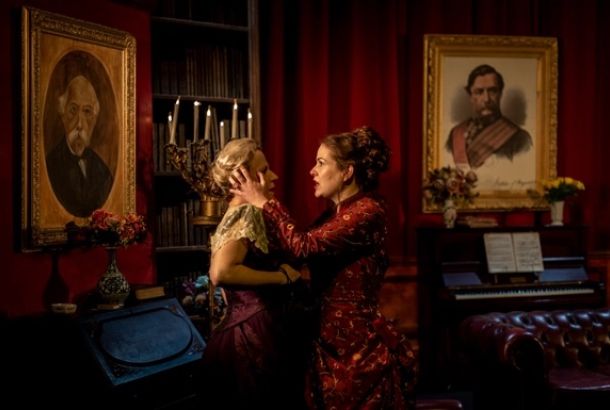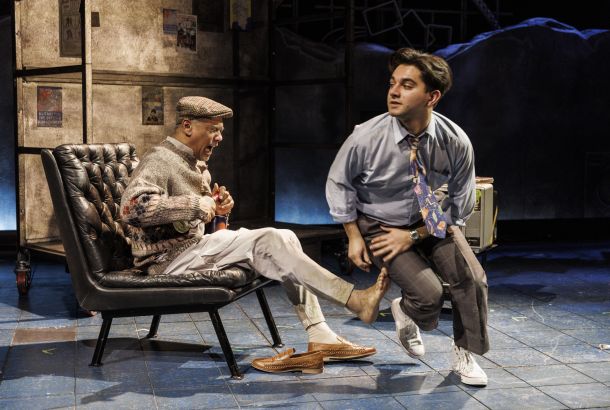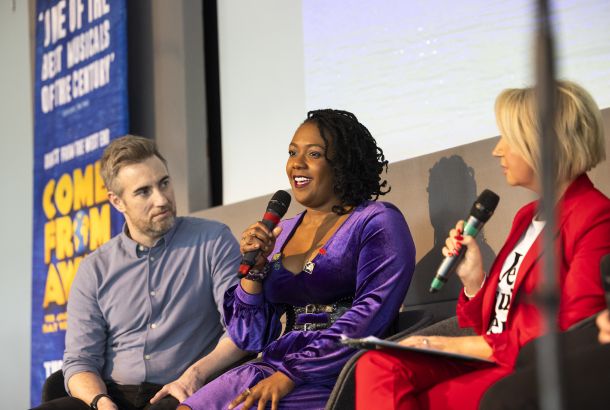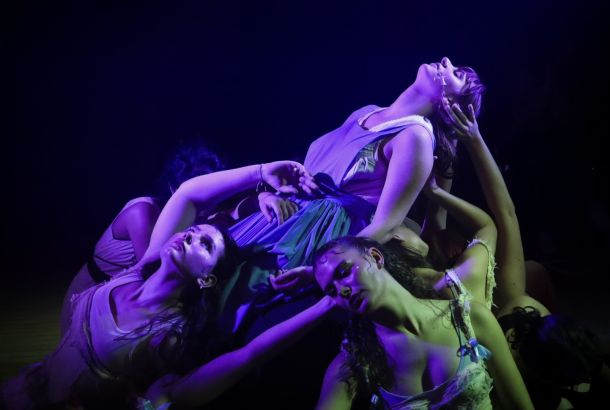Review: Nuclear Future
By Dolly Busby
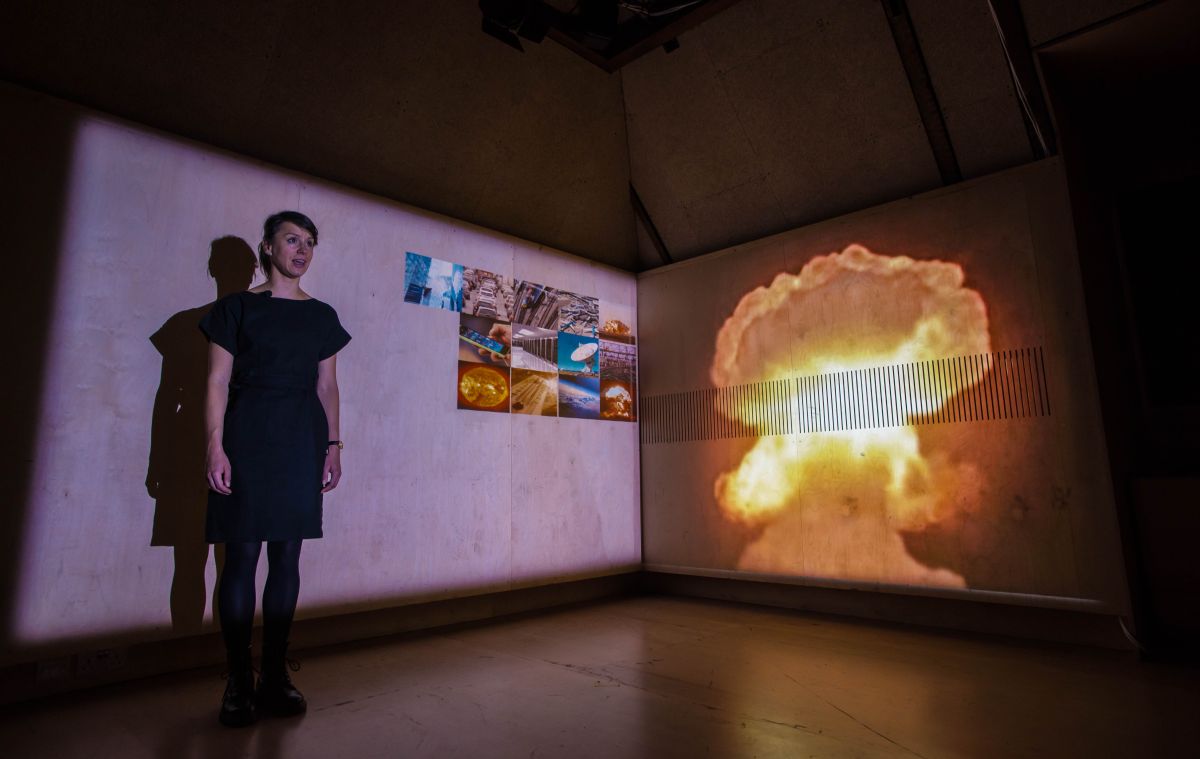
‘I too have a Nuclear Button, but it is a much bigger & more powerful one than his. And my Button works!’
Donald Trump’s Tweets, such as this one from January 2018, are a reminder that the threat of nuclear war is ever-present. And yet the destructiveness of nuclear weapons is so hard to comprehend that the fear of nuclear war rarely keeps us awake at night. Humanity keeps ticking over, and society bites its nails over menial worries.
Gameshow’s Nuclear Future throws a spotlight onto this paradox by depicting quotidian events against a backdrop of nuclear destruction. The play follows the storyline of a tumultuous relationship between Astrid (Leda Douglas) and her young daughter. The progression of their relationship is steered by their surrounding situation: a world on the brink of nuclear war.
The breakdown of familial relations acts as a lens through which the audience can witness everyday life under nuclear conditions. The narrative is disrupted by sterile scenes in which Douglas dons a scientific persona and proceeds to explain the background of nuclear energy and its destructive abilities.
This is a multifaceted play that both educates the audience on the science behind nuclear energy, but also how this science will affect their personal lives.
On walking into the theatre, I was struck by the simplicity of the set. Merely two white gauze sheets placed in a V shape and a bare stage. The play relied heavily on lighting and sound to create atmosphere and suggest setting. I was impressed by the creative and symbolic use of lighting, sound, and projections; its simplicity complimented the play’s message and lent power to it as a piece of theatre.
The artistic style of Joshua Pharo, the lighting and video designer, demonstrated lighting’s ability to singlehandedly create setting and atmosphere. I was fascinated by how just a combination of colours – red, yellow and blue – moving across the gauze could instantly create a moving bus.
Keeping the lighting and set simple and ambiguous meant that the storyline was not grounded to one specific space or to one specific person. Lack of situational detail meant that the play cannot be related to concerns such as class, race or gender. This reinforced the idea that none are exempt from the destructive effects of Nuclear War: it will be a universal disaster.
Douglas’ performance supported this idea of simplicity in her characterisation of Astrid. The struggle Astrid faced was made clear: how to protect your child from minor dangers when you are living in the midst of a nuclear disaster.
But I found, at times, Douglas’ portrayal of Astrid to be rather one-dimensional. Perhaps it was the lack of physical embodiment of the character that was missing from the performance. Douglas stood neutral throughout, relying on mostly facial expression to portray emotion. I found this meant it was harder to empathise with her character, as the audience could only relate to her through the given text. I appreciate, however, being the only actor onstage, that movement can be minimal when there is no one else to interact with. Douglas’ intention with the shortage of characterisation could be read as creating a generic figure, like the setting, for the audience to project themselves onto.
Nuclear Future asserts that the world has the potential to end through the same means that it began: nuclear energy. In the face of this knowledge, it asks us how we are going to respond. Do we waste life by busying ourselves with menial trivialities? Or should we value what’s important in life? Some may find this message clichéd, but the play punches you in the face with hard facts about a very real danger from which we cannot shy away. And in asking us to reflect on existential issues and pose ourselves searching questions, it is doing its job as a piece of drama.
